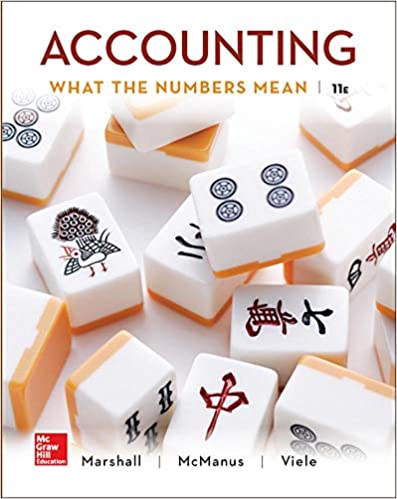
Accounting: What the Numbers Mean 11th Edition by Wayne McManus,Daniel Viele,David Marshall
Edition 11ISBN: 978-1259535314
Accounting: What the Numbers Mean 11th Edition by Wayne McManus,Daniel Viele,David Marshall
Edition 11ISBN: 978-1259535314 Exercise 26
Direct labor variances-banking application Founders State Bank developed a standard for teller staffing that provided for one teller to handle 12 customers per hour. During June, the bank averaged 50 customers per hour and had five tellers on duty at all times. (Relief tellers filled in during lunch and rest breaks.) The teller compensation cost is $12 per hour. The bank is open eight hours a day, and there were 21 working days during June.
Required:
a. Calculate the teller efficiency variance during June expressed in terms of number of tellers and cost per hour.
b. Now assume that in June, during the 11 a.m. to 1 p.m. period every day, the bank served an average of 80 customers per hour. During the other six hours of the day, an average of 40 customers per hour were served.
1. Calculate a teller efficiency variance for the 11 to 1 period expressed in terms of number of tellers per hour and total cost for the month.
2. Calculate a teller efficiency variance for the other six hours of the day expressed in terms of number of tellers per hour and total cost for the month.
3. As teller supervisor, explain the significance of the variances calculated in 1 and 2, and explain how you might respond to the uneven work flow during each day.
Required:
a. Calculate the teller efficiency variance during June expressed in terms of number of tellers and cost per hour.
b. Now assume that in June, during the 11 a.m. to 1 p.m. period every day, the bank served an average of 80 customers per hour. During the other six hours of the day, an average of 40 customers per hour were served.
1. Calculate a teller efficiency variance for the 11 to 1 period expressed in terms of number of tellers per hour and total cost for the month.
2. Calculate a teller efficiency variance for the other six hours of the day expressed in terms of number of tellers per hour and total cost for the month.
3. As teller supervisor, explain the significance of the variances calculated in 1 and 2, and explain how you might respond to the uneven work flow during each day.
Explanation
a.
Calculate the teller efficiency vari...
Accounting: What the Numbers Mean 11th Edition by Wayne McManus,Daniel Viele,David Marshall
Why don’t you like this exercise?
Other Minimum 8 character and maximum 255 character
Character 255


